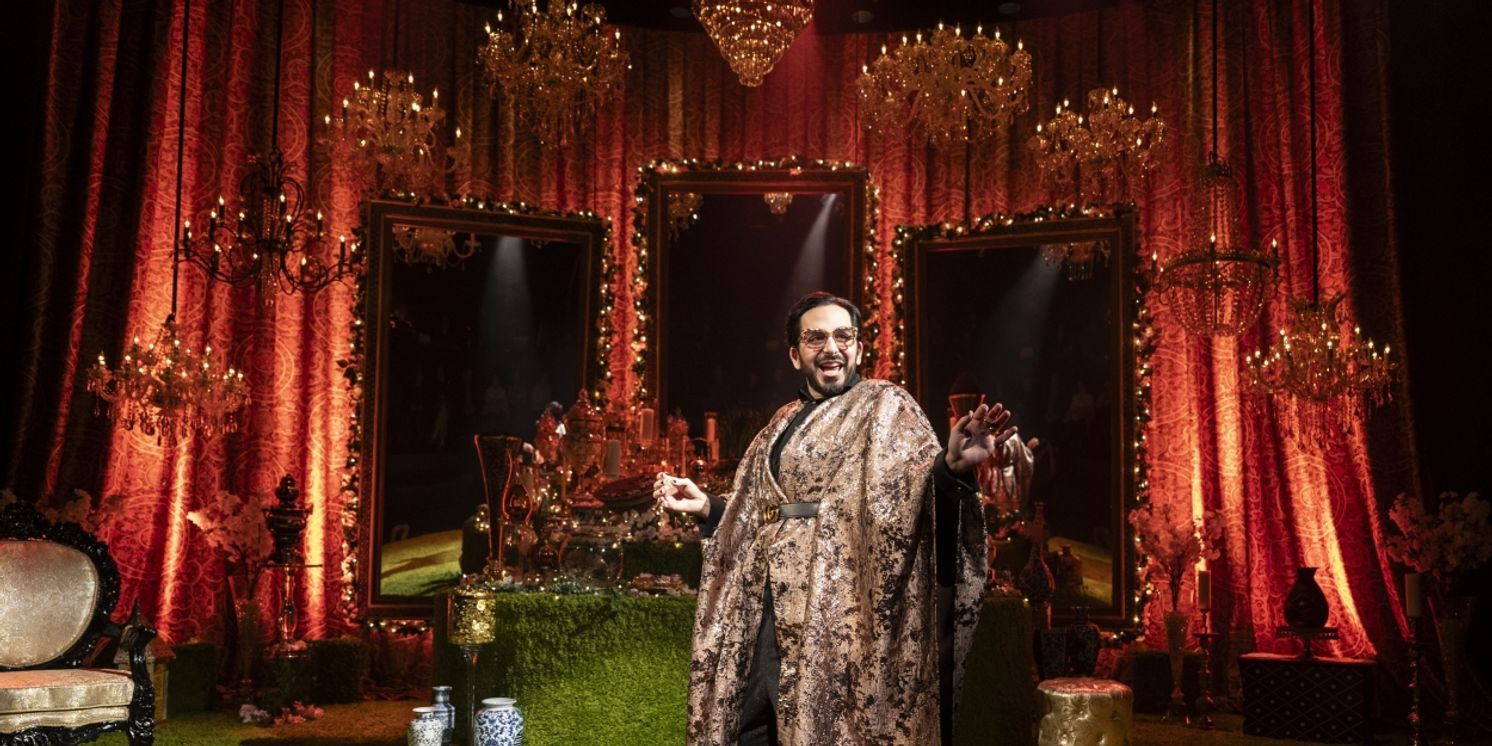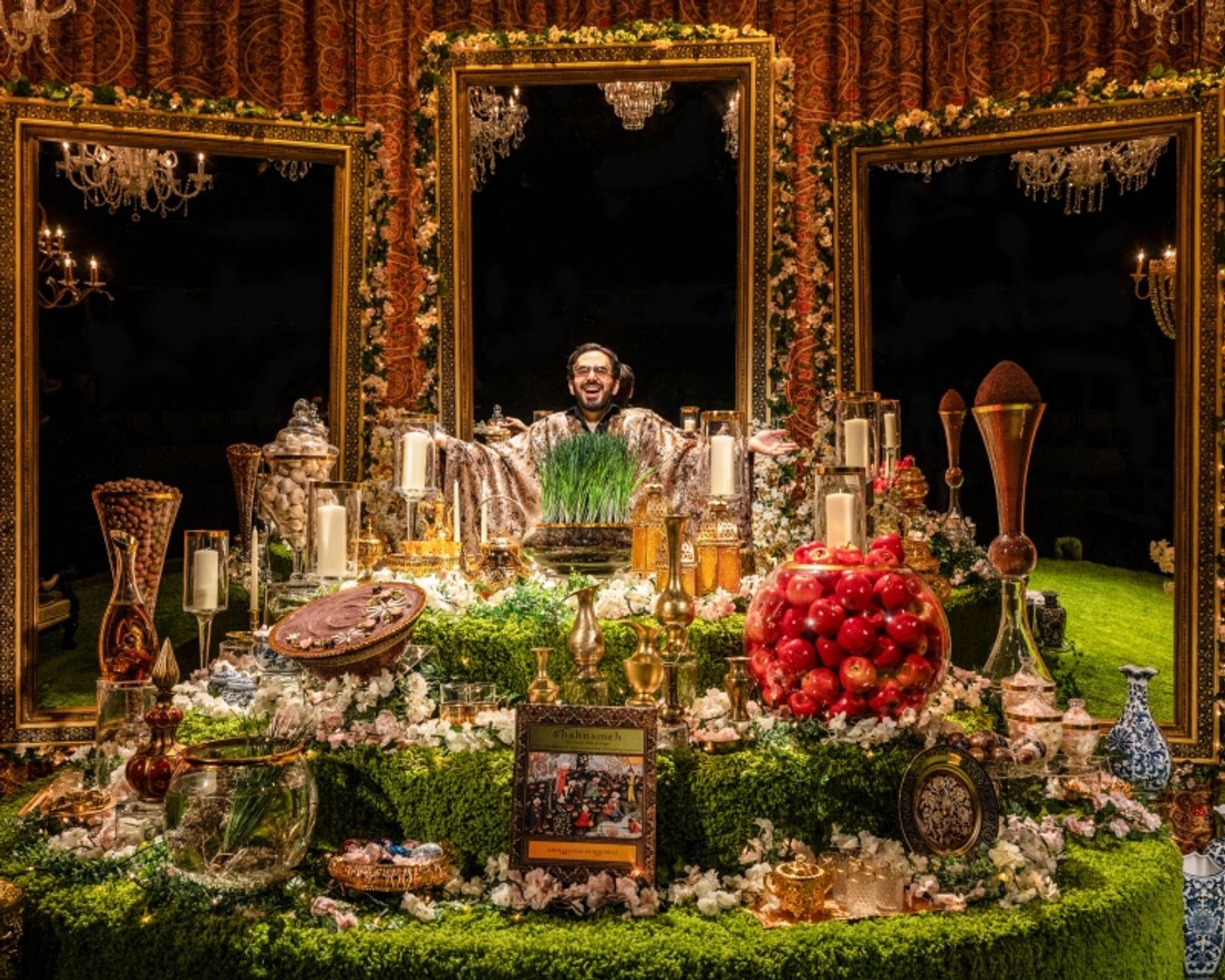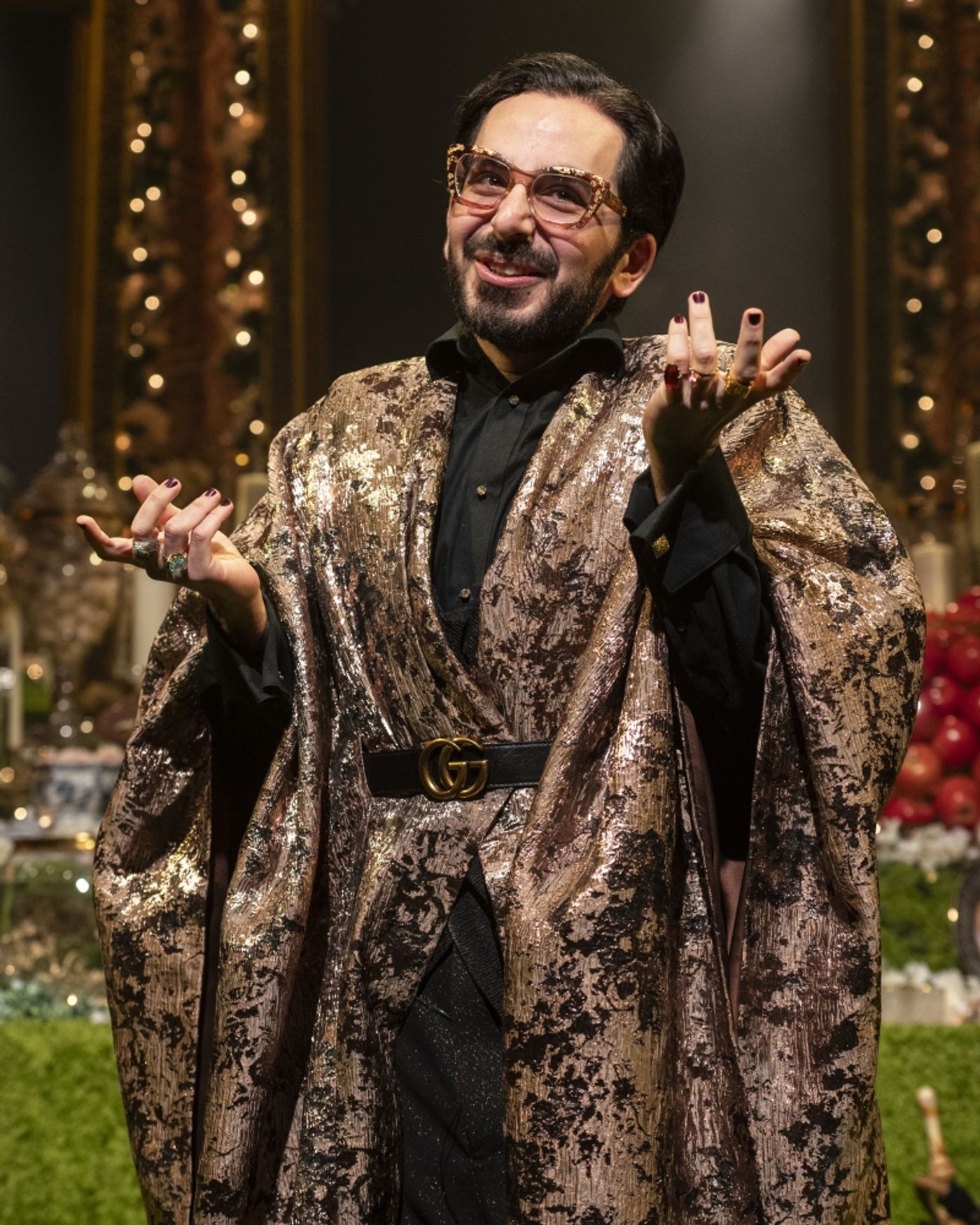Review: AVAAZ at Olney Theatre Center
From Tehran to "Tehran-geles," a bombastic song of freedom

Avaaz begins with a language lesson. Actually, it begins even before it really begins, with the audience ushered past a gorgeously decorated facsimile of an Iranian-style living room bursting with beautiful and exacting detail. Then comes Roya, warmly greeting, joking, and mingling with the audience, her guests, making sure everyone feels properly appreciated and welcomed. After all, this is her home.
The language lesson comes once Avaaz begins in earnest. Roya announces that today is the first day of Nowruz, the Iranian New Year, and then attempts to coach the Olney audience into a proper pronunciation of this Farsi word for “New Day.”
“That’s okay,” she says once her American guests are resoundingly defeated by the rolling r’s. “You learning.”

Nowruz, Roya explains, is a metaphor for rebirth. This holiday and its symbols serve as the framing device that holds Avaaz together and guides its circuitous path. Like Nowruz, this show is a celebration and exploration of transformation. Written by Michael Shayan, Avaaz is told by and from the perspective of Roya, a sensationalized take on Shayan’s own mother, charting her journey from pre-revolution Iran to single motherhood as an Iranian immigrant in the US.
In the show’s most inspired turn, Shayan performs his work in drag as Roya. Shayan is also an important character in the story, with Roya spending most of Avaaz waiting—hoping—for Michael, her estranged adult son, to come back home to Westwood, California and observe Nowruz with her. While waiting, Roya entertains her audience with the story of her life.

Vividly capturing that life is an impressively credentialed creative team that has performed a tremendous feat, assuredly transforming the intimate Mulitz-Gudelsky Theatre Lab in Maryland’s Olney Theatre Center into a dazzling spectacle of color, light and sound that becomes Tehran, “Tehran-geles” and everything in between.
Costume designer Joshua “Domino” Schwartz helps transform Shayan into Roya, while UptownWorks (Noel Nichols, Daniela Hart and Bailey Trierweiler) craft a constant flow of interlacing soundscapes. Amith Chandrashaker’s light design drifts between fine subtleties and showy displays, bringing endless variation to the otherwise unchanging setting of Roya’s home.
To be a guest in Roya’s home is to be immersed in her world. As divinely embodied by Shayan her presence is utterly bombastic, her corny jokes are a riot, and every turn of her Finglish (English mixed with a fair bit of Farsi) ingenious. With each beat, the pairing of Shayan’s writing and acting gain depth, unwrapping another layer to Roya, making her small insecurities sing just as clearly as her bawdy boasts.
These larger-than-life qualities extend beyond Shayan’s writing and acting and into designer Beowulf Borrit’s stunning, maximalist set, the centerpiece of which is a traditional Nowruz Haft-sin: a table that holds seven things beginning with the Farsi letter sin, each of which carry a specific symbolic meaning – it takes the entire performance for Roya to fully unravel the significance of these items.

Beyond the table are three large mirrors that reflect both Roya and her audience –blurring the barriers between the one and the other. It could be said that otherness and barriers are the throughline in Roya’s life. In her home country she was part of the Jewish minority. During Iran’s Islamic Revolution she was a free-spirited woman who yearned for liberation. In America she was a poor immigrant who barely spoke the language. And yet, at every turn she tore through these walls: dancing in underground parties during the Revolution, surviving great hardship to flee Iran for America and even finding her way into higher education (becoming the first in her family to get a degree) while on a visitor visa.
Together, Shayan and director Moritz von Stuelpnagel create a theater that, like Roya, dissolves barriers, crosses borders and tears down walls. Over the course of an hour and a half, Avaaz steadily blurs the lines between performer and audience, between man and woman, between home and homeland, until all that’s left is the chasm between Roya and Michael.
Because, as it turns out, even Roya herself is not immune to othering and intolerance. She may have triumphantly trail-blazed through her own life, defiantly living larger than the expectations of her own family, but that doesn’t make her any less susceptible to repeating the same, familiar pattern with her own son. Shayan slowly reveals the ways in which she too has failed to tolerate Michael’s rebellions against her expectations, and how her treatment of his sexuality, his weight and his profession has created a divide between them.
It may be unrealistic to believe that such divides can ever be fully erased, but Avaaz still lands on a note of hopeful optimism in the belief that deeper mutual understanding is always possible. Avaaz begins with a language lesson, takes it one word at a time, and ends as a lesson in so much more – even if in that ending some misunderstandings still remain, that’s okay too. “You learning.”

Avaaz runs until April 7, 2024 with regular performances Wednesday – Saturday at 7:30 PM and matinees on Saturday and Sunday at 1:30 PM. Performances are 90 minutes long with no intermission.
Reader Reviews
Videos

